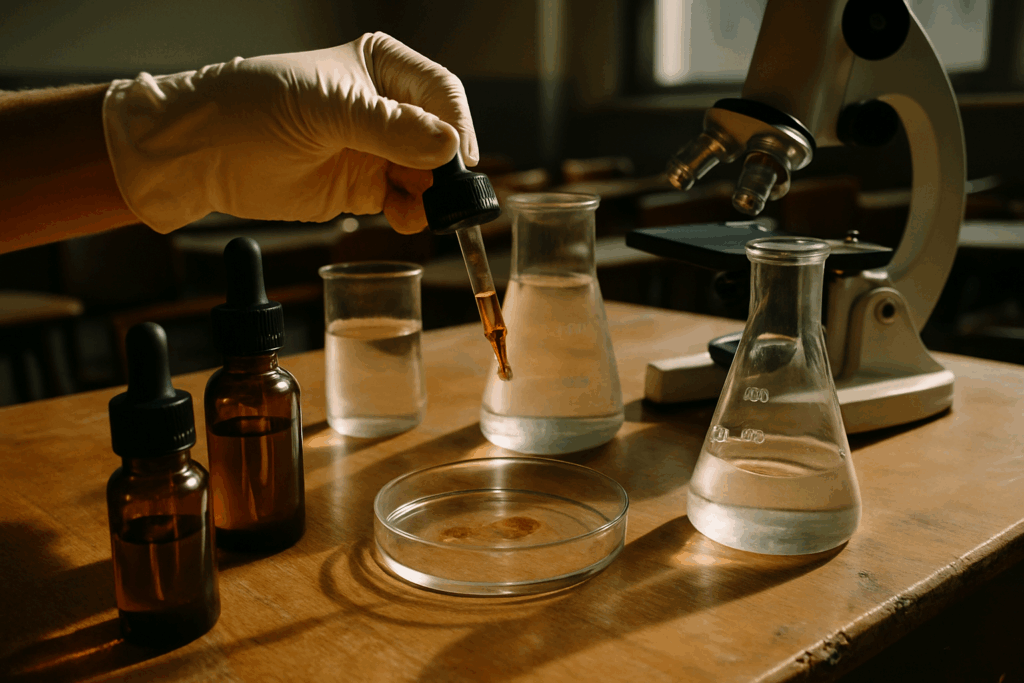What Actually Happens When You Apply a Serum
A serum is basically a skincare overachiever. It’s lighter than a cream but packs a much higher concentration of active ingredients stuff like antioxidants, brighteners, and hydrators. Because of its thin, often water based consistency, it sinks in quickly and gets to work fast. No fluff, just function.
The big difference between a serum and your everyday moisturizer lies in molecule size and intent. Serums are formulated with smaller molecules that can dive deeper into the skin’s surface. Moisturizers do the opposite: they’re made to sit on top, lock in moisture, and protect the barrier.
Getting those active ingredients where they actually need to be that’s where science steps in. Delivery systems like liposomes, nanoemulsions, and encapsulation tech help shuttle ingredients past the outer skin layer without breaking things down or causing irritation. Think of these systems as microscopic messengers: they sneak in, unpack the goods, and get out, all while keeping the actives stable and effective inside your serum bottle.
So next time you apply a serum, remember there are tiny chemical engineers at work, making sure that what you paid for actually reaches the layers that matter.
Skin Barrier Basics
Your skin’s outermost layer the stratum corneum isn’t just dead cells. It’s a carefully arranged, brick and mortar structure of tough protein rich cells (the “bricks”) and fatty acids, ceramides, and cholesterol (the “mortar”). It exists for one reason: to keep the outside out and the inside in. That means stopping dehydration, infection, and yes most skincare products.
When you apply a serum, it doesn’t just soak in. The stratum corneum’s low permeability is designed to reject most large or poorly formulated molecules. Water based actives, oil soluble compounds, and unbalanced pH levels often bounce right off, which is why many skincare products feel great but do relatively little.
To work around this barrier without tearing it down, effective serums use smart delivery systems. Liposomes and encapsulation techniques can bundle actives into skin friendly packages. Nanotechnology scales key ingredients way down so they can squeeze through tighter gaps. Some formulas tweak pH or use carriers that pair naturally with your skin’s chemistry. The best part? All of this happens without damaging the barrier because overloaded or compromised skin can’t function properly either.
Bottom line: the stratum corneum is doing its job. Good skincare respects that, and good serums are designed to work with it not against it.
Ingredients That Go the Distance

When it comes to serums that actually do something, a handful of active ingredients consistently make the cut. Vitamin C (specifically L ascorbic acid) is one of the most studied and potent it brightens skin, tackles free radicals, and can boost collagen production. But it’s finicky. To penetrate effectively, it needs to be in a water based formula with a low pH around 3.5 or lower otherwise, it oxidizes and breaks down.
Niacinamide is another heavy hitter. Unlike vitamin C, it plays well in a wider pH range and is gentler, especially for sensitive skin. It helps with pigmentation, strengthens the barrier, and supports overall skin texture. It’s water soluble, so formulation here depends more on the stability of the carrier system than on pH extremes.
Then there’s hyaluronic acid. High molecular weight HA sits on top of the skin and hydrates by pulling in moisture from the environment. Low molecular weight HA, on the other hand, is small enough to go deeper, hydrating from within. To be clear: even the smaller versions don’t reach the dermis but they do lock in water below the surface layer, which improves elasticity and bounce.
Penetration isn’t just about the ingredient list it’s about formulation. If the pH is off, or if the base carriers don’t aid absorption, even the best actives fall flat. Ingredients need to be dissolved properly, stabilized, and delivered in systems like encapsulated spheres or microemulsions to get where they need to go. In short: not all serums are created equal and the ones that work are the ones that respect chemistry over hype.
Formulation vs. Marketing: What to Look For
A sleek bottle, soft glow, and $120 price tag might tempt you, but don’t confuse aesthetic with efficacy. Expensive serums often invest more in branding than in proven science. A good formula isn’t about hype it’s chemistry.
Cosmetic chemists focus first on ingredient stability and bioavailability. Stability means the formula holds up over time especially for reactive ingredients like vitamin C, which tends to oxidize. Bioavailability means your skin can actually absorb and use the active. That’s where pH balance, solubility, and carrier systems come in. A potent ingredient won’t help if it degrades in the bottle or sits useless on the skin barrier.
Learning to read a label helps. Ingredients are listed in descending order by weight, so actives buried near the bottom may not be present in meaningful amounts. Scan for signs of strong formulation: look for supporting agents like ferulic acid (to stabilize vitamin C), delivery aids like liposomes or squalane, and transparent naming (skip the mystery blends).
Marketing will sell you promises. The formula is what delivers results.
Related read: The Truth About Fragrance in Skincare: Expert Analysis
2026 Insight: What’s Changing in Serum Science
The skincare industry is entering a new era of innovation, and serums are at the center of it. Cosmetic chemists and biotechnologists are pushing the boundaries of what skin treatments can do. Here’s what to look out for as we move toward 2026.
Advanced Delivery Technologies
Modern serums are no longer relying solely on traditional encapsulation methods. Next gen delivery systems are emerging to improve precision and performance:
Bioengineered peptides that target specific skin concerns with greater molecule stability.
Nanocarrier systems that deliver actives deep within the skin layers without causing irritation.
Responsive delivery systems that release ingredients only when triggered by skin’s pH or temperature conditions.
These innovations aim to increase absorption while minimizing irritation, making products more effective and skin friendly.
The Rise of Hyper Personalized Formulations
Personalized skincare is gaining ground, and serums are leading the charge:
Microbiome specific formulations are being developed using DNA or skin flora analysis to match products to individual skin environments.
AI driven diagnostic tools are starting to offer on demand, custom tailored serums designed to evolve with your skin changes over time.
This means your serum could eventually become as unique as your fingerprint formulated in real time based on your exact needs.
Increased Scrutiny & Stricter Standards
As consumers demand more transparency, regulations are catching up:
Tighter controls on efficacy claims will require brands to have robust clinical data before marketing “transformative” results.
Label transparency laws are being proposed in several regions, mandating clearer ingredient disclosures and concentrations.
Crackdowns on misleading terms like “clean” or “natural” will likely reshape how products are marketed.
For consumers, this shift means a less confusing and more trustworthy shopping and skincare experience.
Ultimately, the serums of tomorrow won’t just promise more they’ll be required to prove it.
Final Word from the Lab
Prioritize Function Over Flash
In a market full of beautifully packaged serums and bold promises, it’s easy to get distracted by branding. But when it comes to real skin results, function always wins. Stick with formulas that are backed by clinical research and proven chemistry not viral hype.
Look for products with transparent ingredient lists
Choose brands that cite studies or explain their formulation strategy
Simple, well formulated serums often outperform trend driven options
More Isn’t Always Better
Even high quality active ingredients can overwhelm your skin if overused. Layering multiple potent serums may seem like a productivity hack, but it can disrupt your skin barrier and trigger irritation.
Use actives strategically don’t combine too many at once
Pay attention to concentration levels
Give your skin time to adjust to new ingredients before adding more
Trust Expert Guidance
If you’re feeling lost in the sea of serums, it’s okay to ask for help. A licensed dermatologist or an experienced cosmetic chemist can guide you toward evidence based choices tailored to your skin’s needs.
Dermatologists can evaluate skin conditions that products alone can’t fix
Cosmetic chemists can help you decode ingredient lists for real efficacy
Bottom line: Skincare should be purposeful, not performative. Choose wisely, apply moderately, and when in doubt consult the pros.
